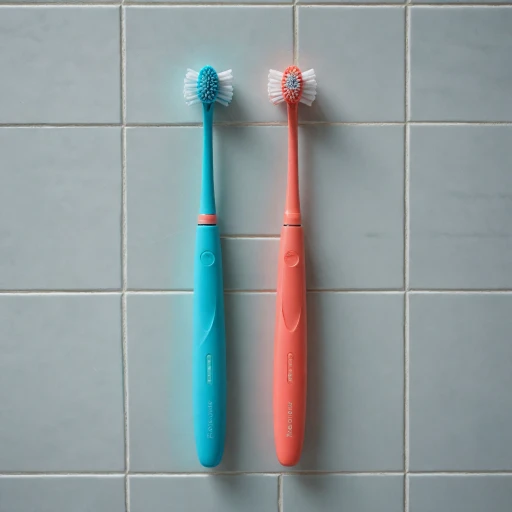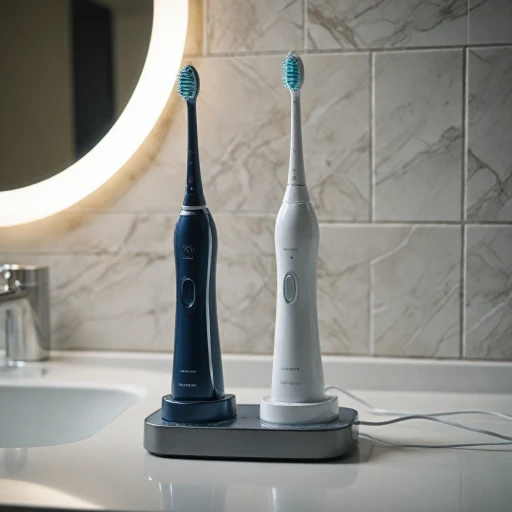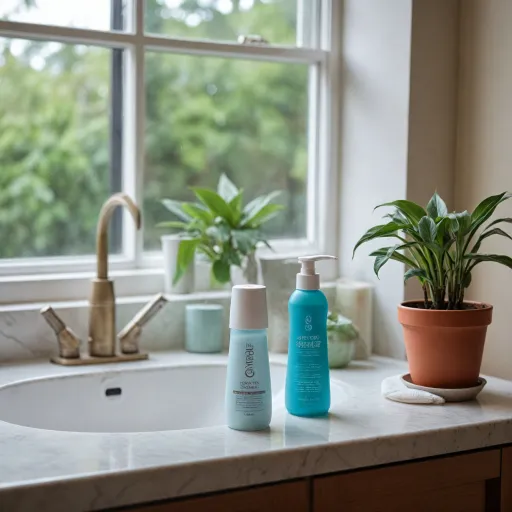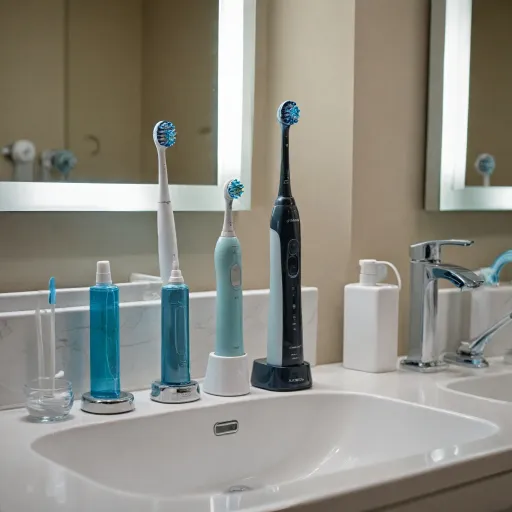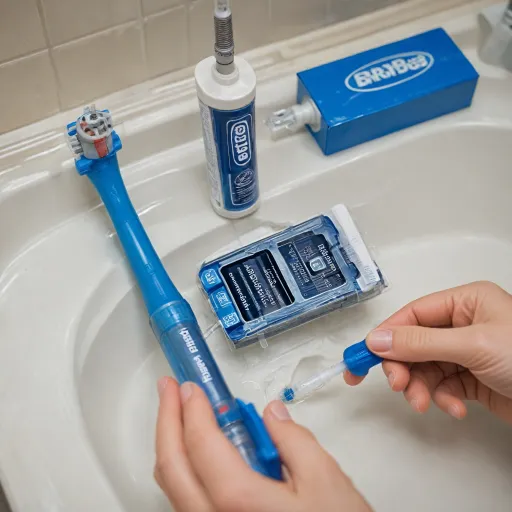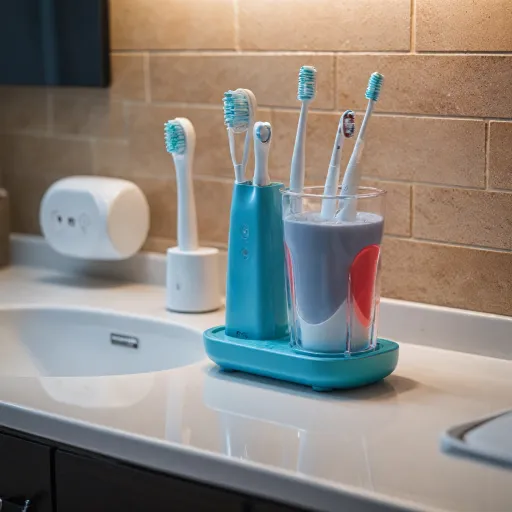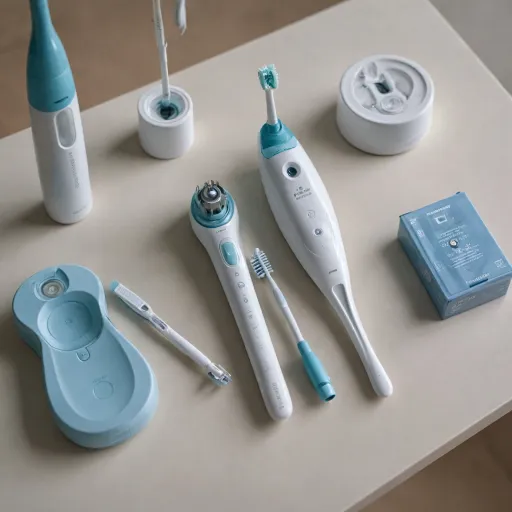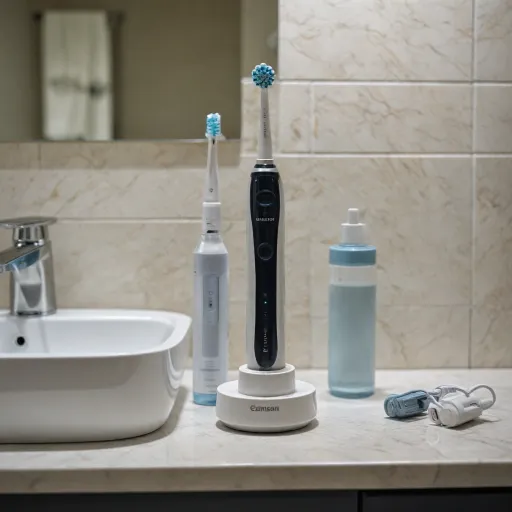
Understanding what makes a toothbrush dentist recommended
What Sets a Dentist-Recommended Toothbrush Apart?
When searching for the best electric toothbrush, many people wonder what makes a toothbrush truly dentist recommended. Dentists focus on features that support effective brushing, protect oral health, and fit individual needs. The right toothbrush can make a real difference in removing plaque, caring for gums, and improving overall oral care.
- Cleaning performance: Dentists look for toothbrushes that offer thorough cleaning, especially in hard-to-reach areas. Powered toothbrushes with oscillating or sonic technology, like the Philips Sonicare series, are often highlighted for their ability to break up plaque and support deep clean routines.
- Soft bristles: Toothbrushes with soft bristles are preferred because they clean teeth and gums gently, reducing the risk of enamel wear or gum irritation. Soft bristles are especially important for people with sensitive teeth or gums.
- Pressure sensors: Many dentist-recommended electric toothbrushes include a pressure sensor. This feature helps prevent brushing too hard, which can damage gums and tooth enamel.
- Built-in timers: A minute timer or quadrant timer encourages users to brush for the dentist-recommended two minutes, helping to ensure a complete clean every time.
- Multiple cleaning modes: Different cleaning modes, such as sensitive, whitening, or gum care, allow users to tailor their brushing experience to their oral health needs.
Electric toothbrushes are often recommended over manual toothbrushes because they offer consistent motion and features that help users brush more effectively. However, the best electric toothbrush for you depends on your specific needs, such as battery life, travel case options, and compatibility with brush heads. If you have braces or other dental appliances, you might want to explore choosing the best electric toothbrush for braces to ensure optimal cleaning and comfort.
Ultimately, dentist recommendations are based on a combination of clinical evidence and real-world results. They consider features that make brushing easier, more effective, and safer for your teeth and gums. In the next section, we’ll look at the key features to consider when selecting an electric toothbrush for your oral health routine.
Key features to look for in an electric toothbrush
Essential Elements for Effective Brushing
When searching for the best electric toothbrush, it’s important to focus on features that genuinely improve oral health. Dentists often highlight that the right combination of technology and design can make a significant difference in how well you clean your teeth and gums. Here’s what to look for in powered toothbrushes to ensure optimal oral care:
- Soft Bristles: Gentle bristles are less abrasive on gums and enamel, making them suitable for sensitive teeth and daily brushing. Soft bristles help remove plaque without causing irritation.
- Pressure Sensor: A pressure sensor alerts you if you’re brushing too hard, which can prevent gum recession and enamel wear. This feature is especially useful for those who tend to brush aggressively.
- Multiple Cleaning Modes: The best electric toothbrushes offer various modes such as deep clean, sensitive, gum care, and whitening. These options allow you to tailor your brushing routine to your oral health needs.
- Timer and Pacer: A built-in minute timer encourages you to brush for the dentist-recommended two minutes, while a pacer helps you evenly clean all areas of your mouth.
- Long Battery Life: Reliable battery life is crucial, especially if you travel frequently. Some models come with a travel case and can last for weeks on a single charge.
- App Connectivity: Smart toothbrushes with app integration can track your brushing habits, offer personalized feedback, and help you improve your technique over time.
- Easy-to-Replace Brush Heads: Regularly changing your brush head is key for effective cleaning. Look for toothbrushes with readily available replacement heads, such as those from Philips Sonicare or Oral series.
Comparing Electric and Manual Toothbrush Features
While manual toothbrushes can be effective with proper technique, electric toothbrushes often provide more consistent cleaning. Features like oscillating or sonic movements, pressure sensors, and multiple cleaning modes set electric models apart from their manual counterparts. These advancements help remove more plaque and support better oral health outcomes.
Personalizing Your Oral Care Routine
Choosing the right features depends on your individual needs. For example, if you have sensitive teeth, look for a toothbrush with soft bristles and a sensitive mode. If you’re focused on deep cleaning or whitening, select a model with specialized brush heads and modes. For those who want to track progress, an app-connected toothbrush can be a game changer.
For more insights on how to enhance your dental care routine with an electric toothbrush, check out this guide on enhancing your dental care routine with an electric toothbrush.
Popular dentist recommended electric toothbrush models
Trusted Electric Toothbrushes in Dental Clinics
When it comes to electric toothbrushes that dentists often recommend, a few models consistently stand out for their performance and features. These toothbrushes are recognized for helping users achieve better oral health, thanks to advanced cleaning modes, pressure sensors, and smart technology. Here’s a closer look at some of the best electric toothbrushes that have earned trust in dental care settings.
- Oral-B Pro Series: Known for its round brush heads and oscillating-rotating technology, the Oral-B Pro Series is frequently highlighted by dental professionals. It offers multiple cleaning modes, a pressure sensor to protect gums, and a minute timer to ensure thorough brushing. Many users appreciate the compatibility with various brush heads, including options for sensitive teeth and deep clean needs.
- Philips Sonicare ProtectiveClean and DiamondClean: Philips Sonicare models are praised for their sonic technology, which delivers up to 62,000 brush movements per minute. The ProtectiveClean line features soft bristles, pressure sensors, and long battery life. The DiamondClean series adds premium features like a travel case and multiple cleaning modes for customized oral care. If you’re interested in maintaining your Philips Sonicare, check out this guide on how to replace the battery in your Philips Sonicare toothbrush.
- Oral-B Genius and iO Series: These advanced models integrate app connectivity, allowing users to track brushing habits and receive feedback. The iO Series, in particular, is noted for its magnetic drive system, which enhances cleaning efficiency and comfort. Both series offer multiple brush heads and modes, making them suitable for a range of oral care needs.
Comparing Key Features for Optimal Oral Health
| Model | Cleaning Modes | Pressure Sensor | Battery Life | App Integration | Travel Case |
|---|---|---|---|---|---|
| Oral-B Pro Series | 3-6 | Yes | 7-14 days | Some models | Optional |
| Philips Sonicare DiamondClean | 5 | Yes | Up to 3 weeks | Yes | Yes |
| Oral-B iO Series | 5-7 | Yes | Up to 2 weeks | Yes | Yes |
These powered toothbrushes are widely available on Amazon and other retailers, making it easy to compare features and prices. When choosing the best electric toothbrush for your needs, consider factors like brush head compatibility, cleaning modes, and battery life. Dentists often emphasize the importance of using soft bristles and a pressure sensor to protect your gums and teeth from excessive force during brushing.
Ultimately, the best electric toothbrush is the one that fits your oral care routine, offers the right features for your needs, and encourages consistent, effective cleaning. Whether you have sensitive teeth, need a deep clean, or want smart app features, there’s a dentist-recommended option to help you achieve optimal oral health.
Manual vs electric: what do dentists really think?
What Dental Professionals Say About Manual and Electric Toothbrushes
When it comes to brushing, dental professionals often highlight the importance of technique and consistency, whether you use a manual or electric toothbrush. However, many dentists now lean towards recommending electric toothbrushes for optimal oral health, especially for those who struggle with plaque removal or have sensitive teeth and gums.
Comparing Cleaning Performance
Studies consistently show that electric toothbrushes, especially those with soft bristles and multiple cleaning modes, remove more plaque than manual toothbrushes. Features like pressure sensors help prevent brushing too hard, which can damage gums and enamel. A built-in minute timer ensures you brush for the dentist-recommended two minutes, improving oral care routines for many users.
| Feature | Manual Toothbrushes | Electric Toothbrushes |
|---|---|---|
| Cleaning Modes | One (manual) | Multiple (deep clean, sensitive, whitening, etc.) |
| Pressure Sensor | No | Yes (in many models) |
| Minute Timer | No | Yes |
| App Connectivity | No | Available in some models |
| Brush Head Variety | Limited | Wide range for different needs |
| Ease of Use | Depends on user | Often easier for those with limited dexterity |
Why Dentists Prefer Electric for Many Patients
- Consistent Results: Powered toothbrushes deliver a uniform brushing motion, reducing the risk of missed spots.
- Better for Sensitive Teeth: Soft bristles and gentle modes help protect sensitive gums and teeth.
- Advanced Features: Pressure sensors, multiple cleaning modes, and app integration support better oral health habits.
- Convenience: Rechargeable battery life and travel cases make electric toothbrushes practical for daily use and travel.
While manual toothbrushes can still be effective with proper technique, the best electric toothbrushes offer features that help users maintain optimal oral health with less effort. Dentists often recommend models with soft bristles, a variety of brush heads, and pressure sensors for the best results. Ultimately, the choice between manual and electric comes down to your personal needs, brushing habits, and oral health goals.
Tips for choosing the right electric toothbrush for your needs
Finding the Right Fit for Your Oral Care Routine
Choosing the best electric toothbrush for your needs can feel overwhelming with so many options available. The right choice depends on your oral health goals, personal preferences, and budget. Here are some practical tips to help you make an informed decision:
- Assess Your Oral Health Needs: If you have sensitive teeth or gums, look for models with soft bristles and gentle cleaning modes. For those focused on plaque removal or deep clean, consider toothbrushes with specialized brush heads and powerful cleaning features.
- Consider Key Features: Features like a pressure sensor can help protect your gums by alerting you if you brush too hard. A built-in minute timer ensures you brush for the dentist-recommended two minutes. Some electric toothbrushes also offer multiple cleaning modes, such as whitening or gum care, to address specific oral care needs.
- Check Battery Life and Charging Options: If you travel often, a model with long battery life and a travel case can be very convenient. Some powered toothbrushes use USB charging, while others rely on charging stands. Think about what fits your lifestyle best.
- Evaluate Smart Features: Many of the best electric toothbrushes now come with app connectivity. These apps can track your brushing habits, provide feedback, and help you improve your technique. If you enjoy tech, this could be a valuable addition to your oral care routine.
- Brush Head Compatibility: Make sure replacement brush heads are easy to find and affordable. Some brands, like Philips Sonicare and Oral-B, offer a wide range of brush heads for different needs, from sensitive teeth to deep cleaning.
- Budget and Value: Electric toothbrushes are available at various price points. While premium models offer more features, many mid-range options provide excellent cleaning performance and essential features like a pressure sensor and timer.
Making the Switch from Manual to Electric
Switching from manual toothbrushes to electric toothbrushes can make a noticeable difference in your oral health. Many users report improved plaque removal and healthier gums after making the change. If you are used to manual brushing, start with a model that offers soft bristles and a gentle mode to ease the transition.
Personal Preferences Matter
Ultimately, the best electric toothbrush is the one you will use consistently. Whether you prefer a simple model or one packed with features like multiple cleaning modes and app support, choose a toothbrush that fits comfortably in your hand and feels easy to use every day. Remember, regular brushing with the right technique is just as important as the toothbrush itself.
How to maintain your electric toothbrush for lasting performance
Keeping Your Electric Toothbrush in Top Shape
Proper care of your electric toothbrush is essential for maintaining optimal oral health and ensuring your investment lasts. While features like pressure sensors, multiple cleaning modes, and smart app connectivity can enhance your brushing routine, neglecting maintenance can reduce their effectiveness over time.- Rinse and Dry After Each Use: After brushing, thoroughly rinse the brush head and handle to remove toothpaste residue and debris. Let the brush air dry to prevent mold and bacteria buildup.
- Replace Brush Heads Regularly: Dentists recommend changing brush heads every three months, or sooner if the bristles become frayed. Worn bristles are less effective at removing plaque and can be harsh on sensitive teeth and gums.
- Clean the Handle and Charging Base: Wipe down the handle and charging station with a damp cloth weekly. This helps prevent grime and toothpaste buildup, especially around the charging contacts.
- Monitor Battery Life: For the best electric toothbrush performance, keep an eye on battery life. Recharge as needed, and avoid leaving your powered toothbrush on the charger constantly to prolong battery health.
- Travel Smart: Use a travel case to protect your electric toothbrush and brush heads when on the go. Many models come with a dedicated travel case, making it easier to maintain hygiene away from home.
- Use Compatible Accessories: Stick to manufacturer-recommended brush heads and accessories. This ensures the pressure sensor, cleaning modes, and other features work as intended, and helps maintain warranty coverage.
Simple Habits for Lasting Performance
- Avoid using harsh cleaners or submerging the handle in water, as this can damage internal components.
- Store your toothbrush upright to allow proper drying of soft bristles and brush head.
- If your electric toothbrush has an app, check for maintenance reminders or usage tips tailored to your oral care routine.

